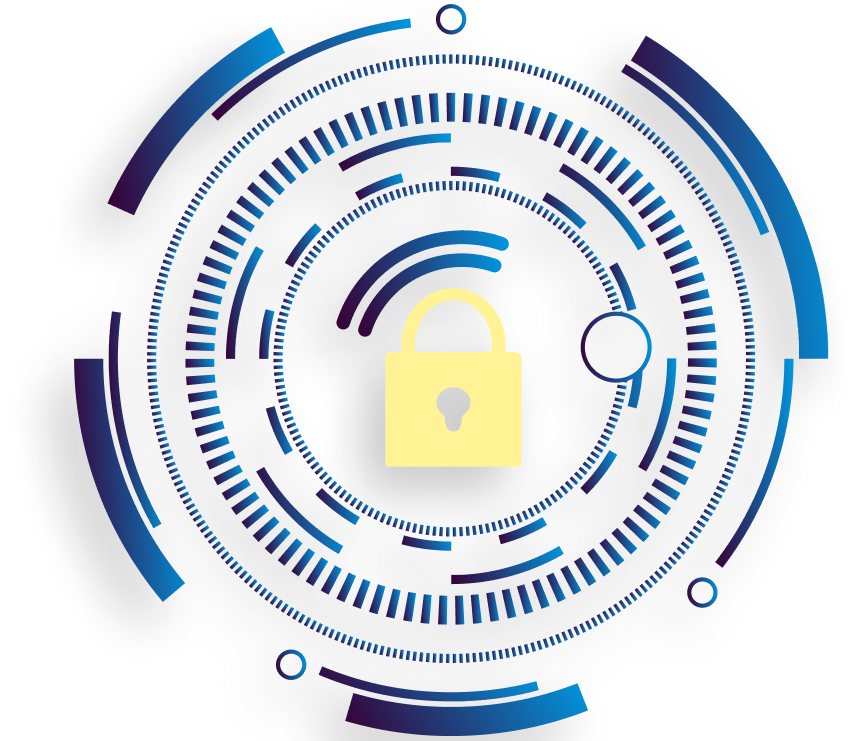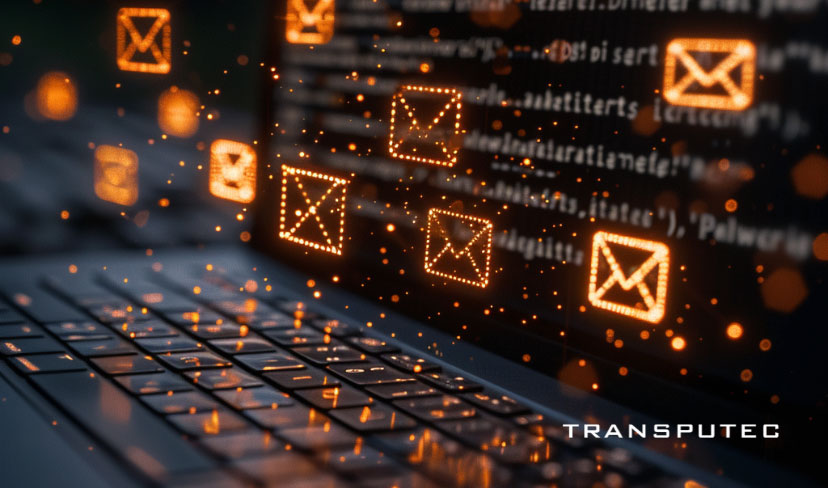Written by KRITIKA SINHA | MARKETING
“To Protect your business from phishing emails, it’s crucial to maintain a secure and trustworthy online presence.”
Imagine this scenario: You’re a busy business owner, juggling a million tasks, when an urgent email lands in your inbox. It appears to be from a trusted vendor, requesting immediate payment or risk service disruption. Without a second thought, you click the link and enter your login credentials. Suddenly you realise, that you’ve just fallen victim to a sophisticated phishing attack, putting your business at risk of data breaches, financial losses, and reputational damage.
Businesses of all sizes are increasingly reliant on email communication. However, with the rise of cybercrime, phishing emails have become a significant threat to organisations. Phishing emails are fraudulent messages designed to trick recipients into revealing sensitive information or installing malware on their systems. These attacks can lead to data breaches, financial losses, and reputational damage.
How to Prevent Ransomware Attacks with Email Security?
At Transputec, we understand the critical importance of robust email security and are dedicated to providing comprehensive solutions to protect your organisation from these pervasive threats.
By combining advanced technical solutions with employee education and robust security practices, Transputec provides a multi-layered approach to phishing email protection, ensuring businesses stay vigilant and resilient against this persistent cyber threat.
Understanding Phishing Emails
Phishing emails are a social engineering attack that exploits human psychology to manipulate individuals into performing actions that compromise their security. These emails often appear to be legitimate, mimicking the branding and tone of well-known companies or organisations. They may contain urgent calls to action, such as updating account information or verifying login credentials, to create a sense of urgency and pressure the recipient into responding without scrutinising the message.
According to the 2022 Verizon Data Breach Investigations Report, phishing was the primary attack vector in 25% of data breaches, highlighting the significance of this threat. The report also revealed that 82% of breaches involved a human element, such as phishing or social engineering attacks.
Implementing Email Security Best Practices
To protect your business from phishing emails, it’s crucial to adopt a multi-layered approach that combines technical solutions, employee training, and robust policies. Here are some best practices to consider:
1. Email Filtering and Spam Protection
Implement email filtering and spam protection solutions to detect and block known phishing attempts. These tools can analyse incoming emails for suspicious patterns, URLs, attachments, and other indicators of phishing attempts.
2. Employee Awareness and Training
Educate your employees on how to recognise phishing emails and the importance of following proper security protocols. Conduct regular training sessions and simulated phishing exercises to reinforce best practices and keep cybersecurity top of mind.
3. Multi-Factor Authentication (MFA)
Implement multi-factor authentication (MFA) for all critical systems and accounts. MFA adds an extra layer of security by requiring users to provide additional verification beyond just a password, making it more difficult for attackers to gain unauthorised access.
4. Email Authentication Protocols
Implement email authentication protocols such as Sender Policy Framework (SPF), DomainKeys Identified Mail (DKIM), and Domain-based Message Authentication, Reporting, and Conformance (DMARC). These protocols help prevent email spoofing and ensure that only legitimate emails from your domain are delivered.
5. Regular Software Updates and Patching
Keep all software, operating systems, and applications up to date with the latest security patches and updates. Outdated software can contain vulnerabilities that cybercriminals can exploit to gain access to your systems.
6. Incident Response Plan
Develop and regularly test an incident response plan to ensure your organisation is prepared to respond effectively in the event of a successful phishing attack or data breach. This plan should outline the steps to contain the incident, mitigate the damage, and recover from the attack.
Learn how to protect your Business with Transputec's Expertise
Connect us today for our free consultation!
How Transputec Helps To Protect your Business from Phishing Emails?
Transputec demonstrates a strong commitment to protecting businesses from phishing emails through its comprehensive cybersecurity services and solutions. Here are some key ways Transputec helps safeguard organisations against phishing threats:
1. Employee Awareness and Training Programs:
Transputec recognises the importance of employee education in combating phishing attacks. We offer comprehensive training programs like Cybsafe to educate employees on recognising and responding appropriately to phishing attempts. Through simulated phishing exercises and training modules, employees learn to identify common phishing tactics, minimising the risk of successful attacks.
2. Advanced Email Security Solutions:
Transputec provides robust email security solutions designed to detect and block phishing emails before they reach users’ inboxes. These solutions leverage techniques such as email filtering, spam protection, and advanced threat detection mechanisms powered by machine learning algorithms.
3. Multi-Factor Authentication (MFA):
Transputec strongly advocates for the implementation of multi-factor authentication (MFA) across critical systems and accounts. MFA adds an extra layer of security by requiring users to provide additional verification beyond just a password, making it more difficult for attackers to gain unauthorised access, even if credentials are compromised through phishing.
4. Email Authentication Protocols:
Transputec helps clients implement email authentication protocols like Sender Policy Framework (SPF), DomainKeys Identified Mail (DKIM), and Domain-based Message Authentication, Reporting, and Conformance (DMARC). These protocols help prevent email spoofing and ensure that only legitimate emails from an organisation’s domain are delivered, mitigating phishing attempts that rely on spoofed sender addresses.
5. Incident Response Planning:
Transputec develops and implements comprehensive incident response plans to help clients detect, respond to, and recover from successful phishing attacks or data breaches. Our team of cybersecurity experts guides clients through the recovery process, minimising the impact of such incidents.
6. Continuous Monitoring and Patching:
Transputec’s services include continuous monitoring, security patching, and risk management practices to address vulnerabilities that could be exploited by phishing campaigns and maintain the security of clients’ environments.
Conclusion
Protecting your business from phishing emails is a critical aspect of cybersecurity. By implementing email security best practices, such as email filtering, employee training, multi-factor authentication, email authentication protocols, regular software updates, and an incident response plan, you can significantly reduce the risk of falling victim to these attacks.
Remember, cybercriminals are constantly evolving their tactics, so it’s essential to stay vigilant and regularly review and update your email security measures. Don’t wait until it’s too late – take action now to safeguard your business from the devastating consequences of phishing attacks.
Contact Transputec today to speak with our cybersecurity experts and learn how we can help protect your business from phishing emails and other cyber threats. Our comprehensive email security solutions and expert guidance will ensure your organisation stays one step ahead of cybercriminals.

Secure Your Business!
Ready to enhance your organisation’s Cyber Security and protect against phishing emails ?
Schedule a call with our team of experts at Transputec.
FAQs
1. What should I do if I receive a suspicious email?
If you receive a suspicious email, do not click on any links or download attachments. Report the email to your IT department or use the phishing report feature in your email client. Delete the email once reported.
2. How often should employee training on phishing be conducted?
Employee training on phishing should be conducted at least quarterly. Regular updates and simulated phishing attacks can help reinforce awareness and keep employees informed about the latest phishing tactics.
3. What is the role of multi-factor authentication in preventing phishing?
Multi-factor authentication (MFA) adds an extra layer of security by requiring multiple forms of verification to access an account. This reduces the risk of unauthorised access, even if login credentials are compromised.
4. Can antivirus software alone protect against phishing emails?
While antivirus software is essential, it alone is not enough to protect against phishing emails. A multi-layered approach that includes email filtering, employee training, and advanced email security solutions is more effective.
5. How can I verify if an email is legitimate?
To verify if an email is legitimate, check the sender’s email address for discrepancies, look for signs of spoofing, and avoid clicking on links or downloading attachments from unknown sources. When in doubt, contact the sender through an alternative method to confirm the email’s legitimacy.
By following these guidelines and implementing the recommended security measures, your business can stay one step ahead of cybercriminals and protect against the growing threat of phishing emails. For expert assistance and customised cybersecurity solutions, get in touch with Transputec today.






